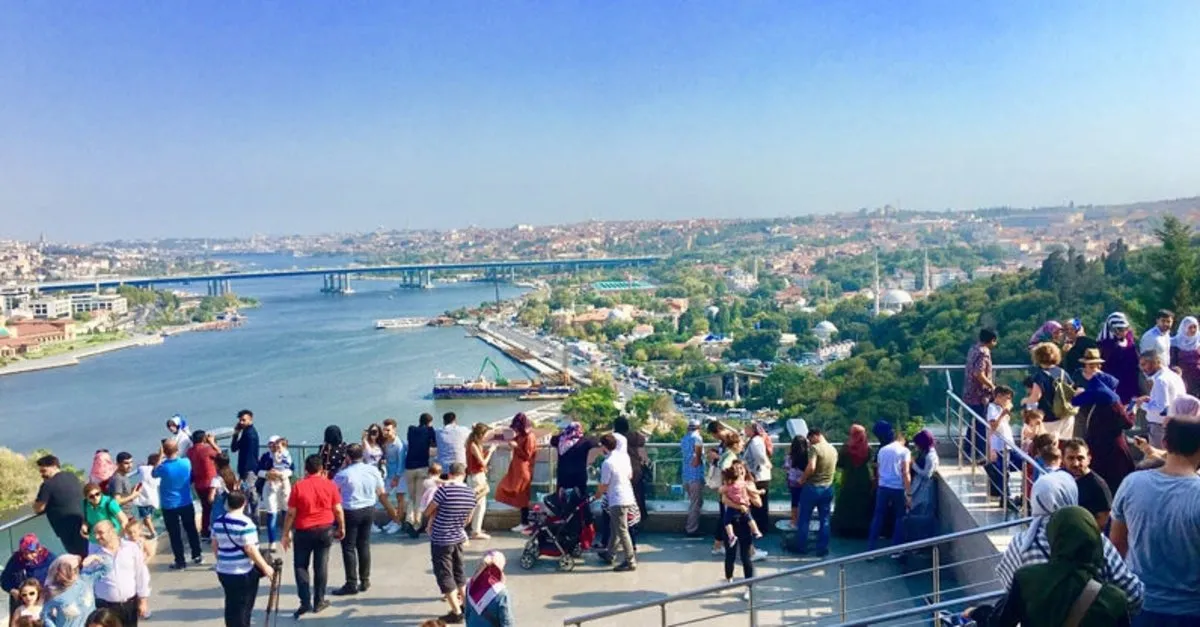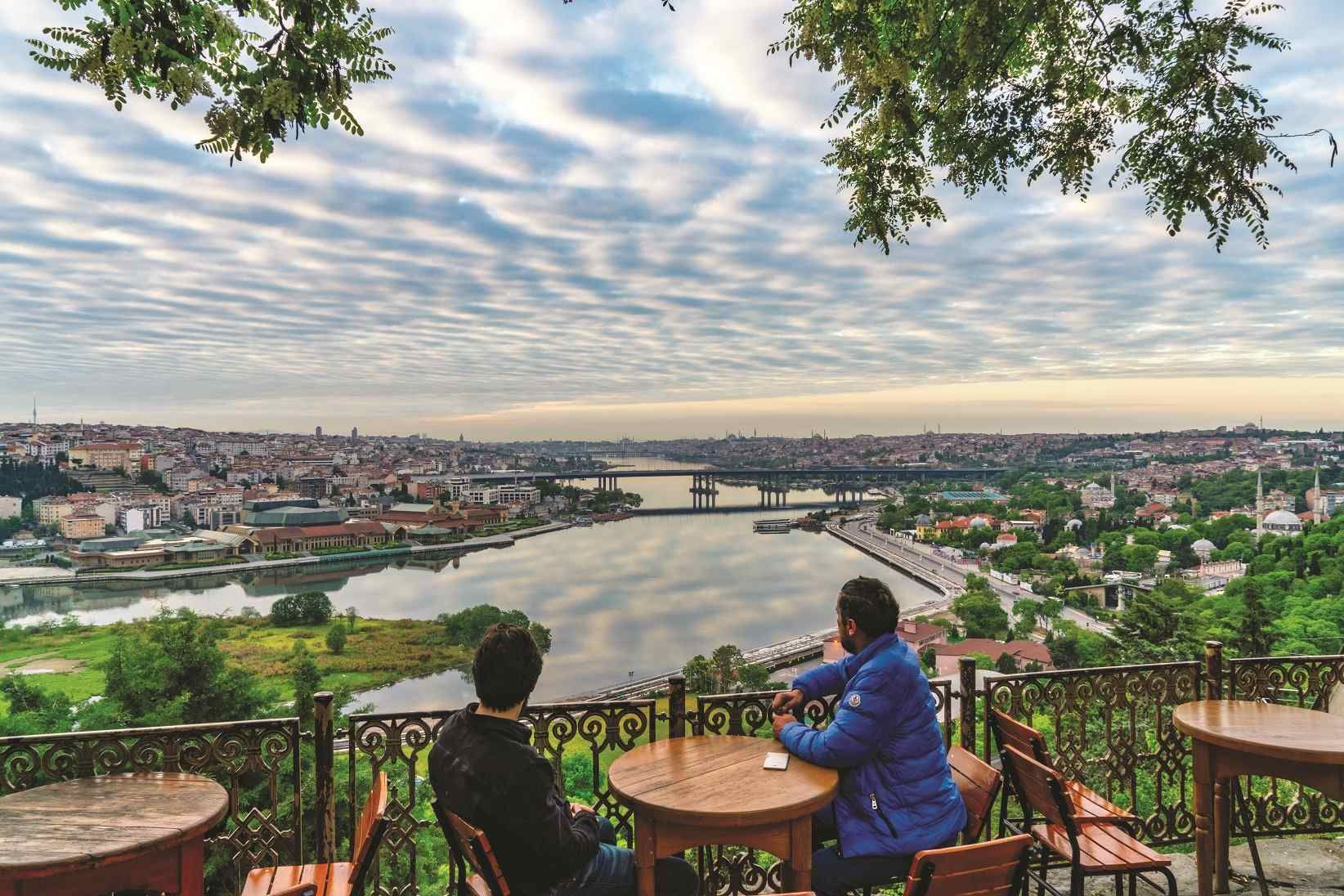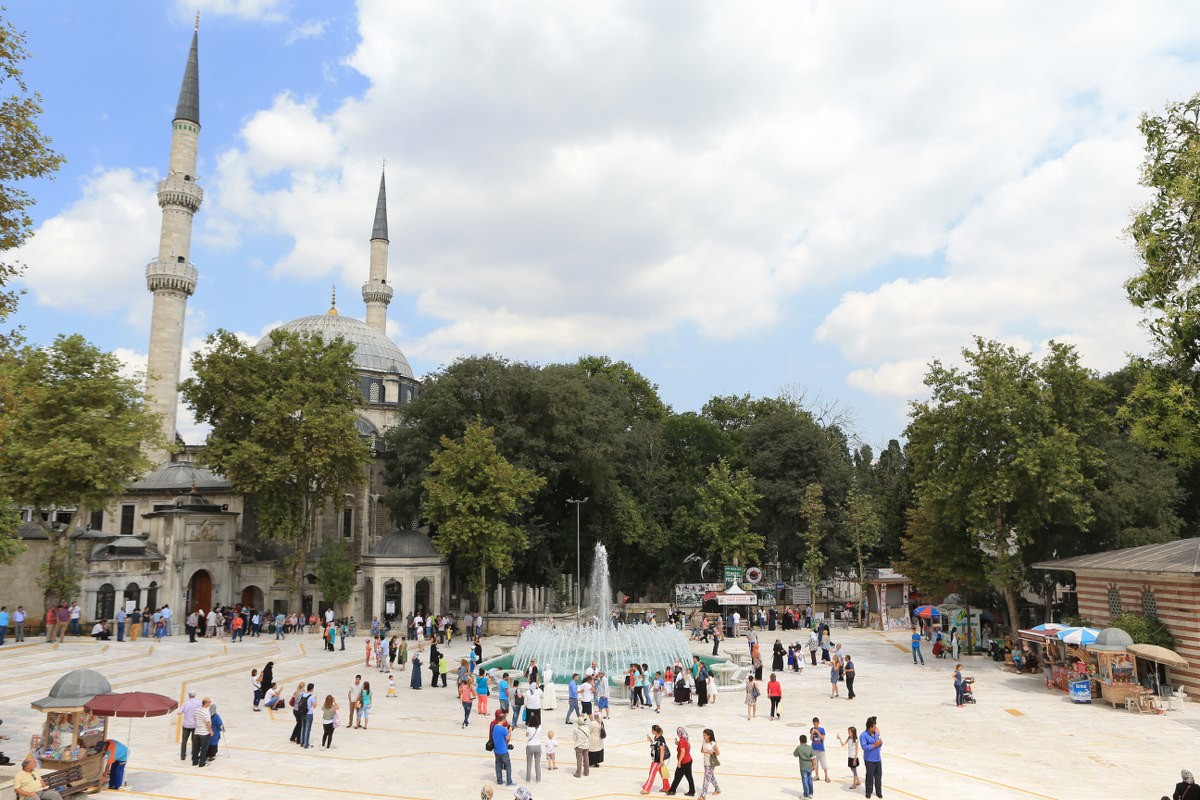When the endless energy of Istanbul starts to wear you down, imagine a magical place where you can forget the city's chaos for a moment and just breathe. That enchanting escape is Pierre Loti Hill, laying the golden waters of the Golden Horn at your feet. So, what's the secret behind this famous hill? What awaits you there? In this guide, we'll explore the most delightful items on the list of things to do in Pierre Loti, charting a course for an unforgettable day—from soaring through the sky by cable car to getting lost in memories at a historic café, and then descending to a haven of spiritual peace. If you're ready, our climb to Istanbul's most romantic hill begins now!

Take the cable car from Eyüp and ascend the hill with a view of the Golden Horn
The first step of your Pierre Loti adventure begins with a magical journey that will transport you from the ground to the sky, from the present to the past: the cable car. The TF2 Eyüp-Piyer Loti Cable Car Line, which departs from right next to the Eyüp Sultan Mosque, is not just a mode of transport but the very first moment you begin to sightsee. As you step into the cabin and start to ascend, the city's noise slowly fades below, and the famous panorama of the Golden Horn unfolds before your eyes.
As you climb higher, the centuries-old cypress trees and Ottoman tombstones of the historic Eyüp Cemetery passing beneath you whisper of the deep layer of history accompanying this modern journey. Within minutes, the curves of the Golden Horn, the historic city walls, and the bridges become distinct as you glide toward one of Istanbul's seven hills—the most poetic one. This short but impressive ride is like a trailer for the experiences awaiting you at the top.
The cable car generally operates from 08:00 AM to 11:00 PM in the summer and until 10:00 PM in the winter, offering you the chance to witness the view at different times of the day. As ticket prices may change over time, we recommend checking the current fares before your trip. If you prefer a more authentic and tranquil start, you can also reach the hill via a mystical 15-20 minute walk along the stone-paved path that winds through the cemetery.

Sit at the historic café and sip your tea against the backdrop of the Golden Horn
When you reach the top, the first thing to greet you will be the famous historic café, with its checkered tablecloths and the mingling aromas of freshly brewed tea and Turkish coffee. This is not just a café, but a place where time seems to stand still, taking its name and spirit from a 19th-century lover of Istanbul. The French naval officer and writer Pierre Loti, whose real name was Julien Viaud, visited this hill so often that the establishment, then known as Rabia Kadın Kahvesi, eventually became known by his name.
It is said that Loti penned his famous novel Aziyade, set in the Ottoman Empire, right here while gazing at the Golden Horn's view, which was then adorned with wooden waterside mansions. This is a fascinating example of how a place's identity can be shaped. A quiet corner once known only to locals became world-famous through the romantic perspective of a foreign writer, gaining international renown. Today, when you sit at one of those tables, you are not just sipping your tea; you are becoming part of a literary and romantic legacy initiated by another traveler a century ago.
But don't limit your exploration of the hill to the café. As you wander around, you can discover the hill's own little secrets. Take a look at the famous Wishing Well (Niyet Kuyusu), which was even mentioned in Evliya Çelebi's Book of Travels; legend has it that those who look inside see their heart's desire. Around the hill, you will also find historical structures that predate Loti, such as the tomb of the Mevlevi dervish İskender Dede. These small details show that the hill is not just a viewpoint but also a living layer of history.

Visit the Eyüp Sultan Mosque and Tomb
As you leave the romantic and nostalgic atmosphere of the hill and descend to the shores of the Golden Horn, you reach the deepest layer of your journey: the Eyüp Sultan Mosque and Tomb. This is one of the most sacred sites not only for Istanbul but for the entire Islamic world. At the spiritual heart of the mosque lies Abu Ayyub al-Ansari, the standard-bearer of the Prophet Muhammad and his esteemed companion who hosted him in his home in Medina. The tomb of al-Ansari, who was martyred during the first Arab siege of Constantinople, was miraculously discovered after the conquest by Fatih Sultan Mehmed's teacher, Akşemseddin. Fatih then commissioned a complex to be built on this holy site.
The structure you see today is not the original mosque built by Fatih in 1458. Over the centuries, the building was damaged, particularly by earthquakes, and was almost completely rebuilt in the late 18th century by Sultan Selim III. Therefore, the mosque reflects not classical Ottoman architecture but one of the finest examples of the elegant and ornate Ottoman Baroque style. This shows that the mosque is not just a historical relic but a living, breathing monument that, like Istanbul itself, has been destroyed and rebuilt, carrying the marks of different eras.
Upon entering the mosque's serene inner courtyard, you are greeted by a fountain, a centuries-old plane tree, and a profound spiritual atmosphere. The main focus of the visit is undoubtedly the tomb of Abu Ayyub al-Ansari. Its walls, adorned with stunning Iznik tiles, and the deep tranquility within leave a lasting impression on visitors. Another historical significance of this site is that the accession ceremonies of Ottoman sultans were held here. New sultans would officially declare their reign by girding the Sword of Osman in this sacred place.
It is important to observe certain rules when visiting this holy site. As the mosque is open for worship, it is more appropriate to visit outside of prayer times. Visitors are expected to wear modest clothing that covers their shoulders and knees, and women are expected to cover their heads. The tomb is generally open to visitors between 09:30 AM and 04:00 PM.
While You're Here...
Your day at Pierre Loti Hill and Eyüp Sultan is a wonderful start to understanding Istanbul. Ascending a hill with a modern cable car to experience 19th-century nostalgia, and then descending to its foothills to a spiritual center dating back to the 15th century, is the perfect summary of how this city's different layers are intertwined.
After completing your exploration of this area, you can venture out to other beauties the Golden Horn has to offer. After the spiritual atmosphere of Eyüp, how about getting lost in the colorful bay-windowed houses and historic streets of (https://www.yerelrehber.com/en/explore/things-to-do/chora-museum) on the opposite shore of the Golden Horn? If you want to see a different face of Istanbul, with its famous mosque that is the pearl of the Bosphorus and its lively square, you can head to(https://www.yerelrehber.com/en/explore/things-to-do/ortakoy-square). A completely different Istanbul view awaits you, accompanied by the scents of kumpir and waffles. For a different experience, Miniatürk or the Rahmi Koç Museum on the Golden Horn shore are also great alternatives.
Source: For more detailed and up-to-date information about the Eyüp Sultan Mosque and Pierre Loti area, you can visit the official website of the Eyüpsultan Municipality.
Frequently Asked Questions (FAQ)
Question 1: How can I get to Pierre Loti Hill besides the cable car?Answer: In addition to the cable car, you can reach the top with a 15-20 minute walk along the historic path through the Eyüp Sultan Cemetery. There are also municipal buses and minibuses that serve the area.
Question 2: What is the best time to visit Pierre Loti?Answer: Sunset hours offer the most photogenic and romantic views with the golden light reflecting on the Golden Horn. However, if you want to avoid the crowds, weekday mornings are ideal for a quieter experience.
Question 3: What should I pay attention to when visiting the Eyüp Sultan Mosque?Answer: Since the mosque is open for worship, it is important to visit outside of prayer times, be quiet inside, and dress modestly (headscarf for women, and clothing that covers shoulders and knees). The tomb is generally open to visitors from 09:30 AM to 04:00 PM.


 English
English Türkçe
Türkçe